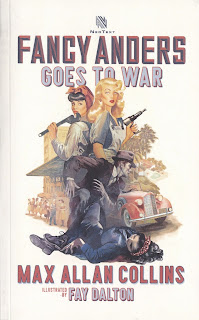This is reportedly the first of the Rick Holman series, although I have seen references to it being number two. It was published in 1961, an era I’ve been reading quite a lot of recently although not necessarily by design. Rick Holman is a Hollywood PI, a cool cat who tends to know more about what is happening than he lets on. He is hired by one of Hollywood’s hottest glamour queens, Ms. Zelda Roxane to be a sort of keeper of the peace/bodyguard during a weekend retreat at her house where she has invited five men, including three ex-husbands to a blackmailing party. Seems Zelda is short of cash and…well, it seemed like a good idea at the time. One of the five men gets murdered and it is up to Rick Holman to solve the case.
Parts of this novel were exactly what I expected: a good mix of characters, some innocent, some dumb, some downright slimy, lots of titillating tease scenes, and oozing 1960’s culture. At first it seemed to be a straight-forward crime story but then it morphed into almost a Hercule Poirot locked-room mystery story with Rick Holman even spilling the results of his investigation to the room full of suspects. But in the end it morphed one more time into a twist ending that I didn’t see coming but endeared the character of Rick Holman to me quite nicely.
Happily, I still have about 20 more of these Carter Brown novels with McGinnis cover art to make my way through and I shall look forward to them for quick reads when the mood strikes me.










